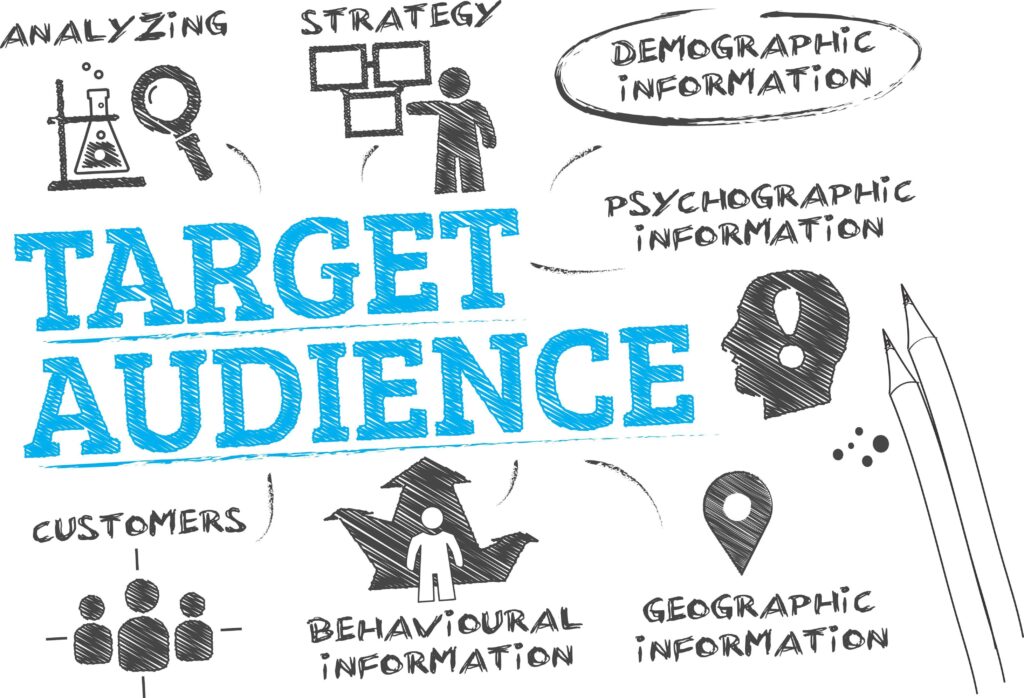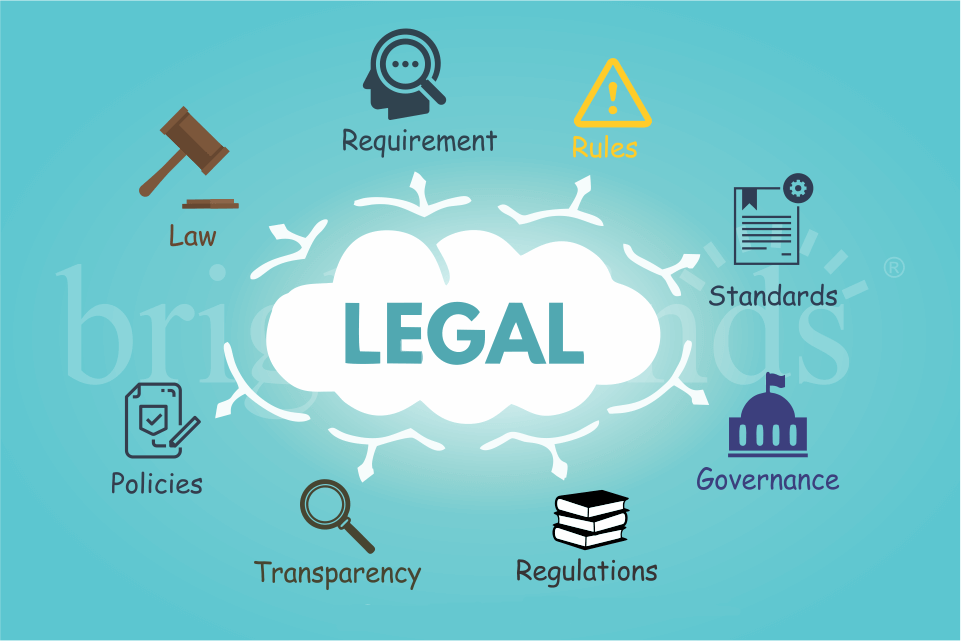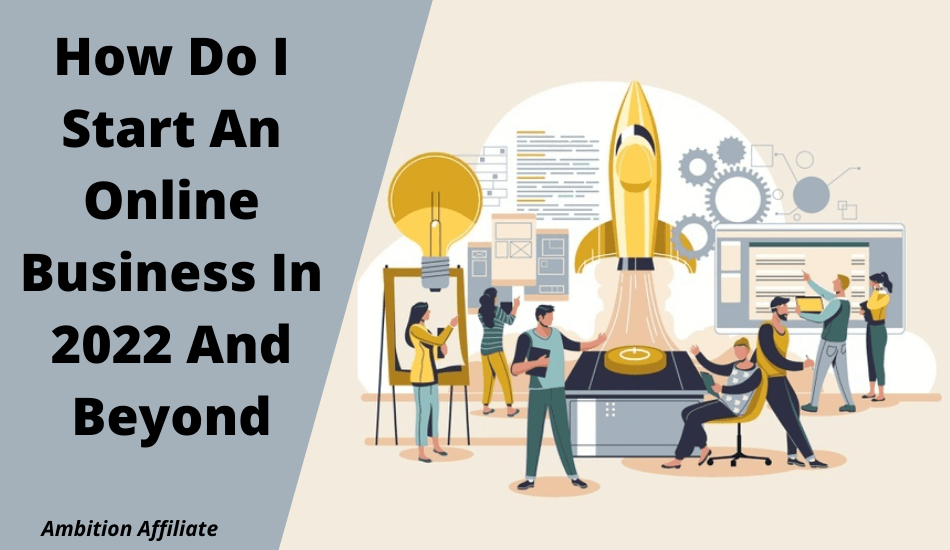There is quite an obvious appeal to starting an online business. Websites are inexpensive to build and can be run from home in your spare time while you build up momentum. Not to mention that there can be a global audience to tap into.
Last but not least, the ongoing pandemic has shown the advantage of purely online business over a stationary website. Not only did online stores not have to close, but since everyone was stuck at home, e-commerce sales soared.
From conducting market research to introducing social channels to dealing with pesky regulations, I’ll be with you every step of your online business trip and help you get started with ease.
Table of Contents
Why You Should Start An Online Business?
 You might be asking yourself why you should start an internet business in the first place.
You might be asking yourself why you should start an internet business in the first place.
Starting an online business has several advantages.
Here are the three most important:
It’s pretty cheap to start with.
Many want to start a business but are put off by the investments it takes to get started. You need to pay for a lease, buy inventory, and budget for employee salaries. What if you put all that money into your business and it doesn’t work? This can ruin you financially.
With an internet business, though, all you need is:
- Computer. You probably already have one.
- Domain name. You can get one for less than $ 10 / year.
- Website hosting: Monthly plans start for $5/mo.
- Store builder (like Shopify) if you’re starting a dropshipping: Monthly plans start for $29.90/mo
In other words, it is possible to start an online business with $ 100 as seed capital.
The more entry fee you have, the more online business ideas you can of course pursue.
The point is that you don’t have to put your life savings on the line in order to become a (successful) online entrepreneur.
Great potential and growth.
When you have a brick-and-mortar business, you have to grapple with the limitations of the “real world”.
Renting in prominent locations is costly, there may not be enough foot traffic on some days, and the local crowd does not always require anything.
But guess what? None of these limitations apply if you start an internet business. You can sell to anyone, regardless of their location.
And every year your pool of potential customers expands as more and more people become familiar with the idea of online shopping. E-commerce will account for 22% of global retail revenues by 2023.
In addition, the global internet population is also growing For example, between 2009 and 2020, the number of Internet users in North America increased by 73.3 million people
But that is nothing compared to the regions that are still developing!
The number of Internet users in Asia rose from 764.4 million to 2.5 billion, which means an additional 1.76 billion people used the Internet.
More people online – more potential exposure for your online brand. Especially if you don’t mind running your online business across the border.
Can run around the clock.
Another advantage of online business over brick-and-mortar business is that they can stay open around the clock (even in the event of locks and other disruptions).
Once your online business website is up and running, you are always “on” to make a sale. Buyers can order from you at any time.
Since you don’t have to be physically there to make a sale, your business can generate revenue with less daily engagement.
5 Examples of Online Businesses to Try
With so many business opportunities and myriad ultimate guides to choose from, it can be difficult to decide which one to choose. It’s understandable because you don’t want to risk too much either.
I did some research for you and narrowed everything down to just five online business ideas.
Start an eCommerce store.
Ecommerce has been around for nearly four decades, but there has never been a better time to open an online store than it is now.
According to the research “The Future of Retail 2019,” a third of US consumers (32%) now receive one or more Amazon packages per week. 10% of consumers now receive three or more Amazon packages per week.
It’s safe to say that this reliance on Amazon also makes people more comfortable shopping online in general.
According to the same study, 46% of consumers are more willing to buy a major item like a car or a BBQ online than they were a year ago.
After you’ve decided on your product categories, choose an eCommerce platform (BigCommerce, Magento, Shopify, WooCommerce, etc.), set up your online store, and start traffic. Alternatively, you can start selling on online marketplaces like Amazon, eBay, and Etsy.
While eCommerce offers all three of the online business benefits discussed earlier, it should be kept in mind that online trading profit margins can be small for some types of products.
Get into dropshipping.
Dropshipping is a type of online fulfillment that allows you to sell tangible things without having to keep inventory.
This is how it works:
On your eCommerce website, a consumer places an order for a product.
The order is forwarded to the manufacturer by you.
The manufacturer then sends the product directly to the customer.
Dropshipping is an attractive option for those looking to get into eCommerce without the financial risk that comes with keeping an inventory. So it’s no wonder the dropshipping market is growing! The revenue forecast for 2025 is $557.9 billion.
While dropshipping is attractive, it has some drawbacks as well. These include low-profit margins, slow shipping speeds, and a lack of control over the supply chain, among others.
Become an Affiliate Marketer.
 Affiliate marketing is worth considering if you want to start an online business but are not interested in developing your own products.
Affiliate marketing is worth considering if you want to start an online business but are not interested in developing your own products.
It’s a popular way to make money online. The brands’ annual affiliate marketing spend is estimated at $ 12 billion, according to SaaS Scout. In the next few years, the number is expected to increase by 10%.
This is how affiliate marketing works:
- To begin, join an affiliate program.
- Then choose a product to promote to your audience that belongs to someone else. This can be a digital or physical product (e.g., an e-book, an online course, an app, etc.).
- You will then receive a commission for every sale generated via your referral link.
You can promote affiliate products on your blog by building SEO content around relevant keywords and then tweaking it to get organic traffic from Google. You can also use social media to promote affiliate products.
When done correctly, affiliate marketing can be incredibly profitable. For example, Adam Enfroy made $ 812,718 in 2020. $ 601,698 was passive affiliate marketing income.
You can also promote your email list subscribers to affiliate products by allowing your affiliate partners to host webinars for your audience.
Affiliate marketing is a great business model with an extremely low start-up cost. All you have to do is prepay for a domain name, web hosting, and email marketing software.
That being said, successful online businesses that start selling affiliate products tend to eventually release their own merchandise. That way, you can make a lot more money with the same amount of traffic.
Offer web design services.
You can learn and experiment with the basics of web design through eLearning platforms. Then create a portfolio website to attract clients. Or register with a freelance marketplace like Upwork or 99Designs. By the way, you don’t have to be a full-time freelancer, you do web design as a sideline.
However, working freelance can be challenging at times. You benefit from being independent of location and a flexible schedule, but initially, you also have less predictable income and financial stability. So set up an emergency fund before going all in.
However, once you have some knowledge of web design, you can start creating and selling your own products (e.g. WordPress templates). This can help create financial stability.
Create a remarkable blog.
Do you have a knack for writing? Then blogging could be an online business idea worth considering.
While a blog isn’t a business model in itself, it does allow you to build an audience.
Once you have an audience, you can sell your own product or service, promote affiliate products, run sponsored campaigns with brands, and so on. Popular bloggers also receive public speaking concerts and book offers.
How to start your online business in 12 steps
Let’s look at the operational components of beginning an online business once you’ve decided on a business strategy. Here’s a step-by-step guide to getting started:
- Determine your niche and business idea.
- Carry out product research.
- Conduct market research.
- Define your target audience.
- Procurement of products for online sale.
- Assessment of product capability.
- Define your brand and your image.
- Build your website.
- Fill your site with optimized texts.
- Comply with the legal requirements for online business
- Start social media channels
- Generate traffic for your online business
Determine your niche and business idea
 A business niche represents your “focus area” – a market segment and audience that you primarily serve. This can be anyone, from sports enthusiasts (e.g. gymnasts) to hobbyists (e.g. stamp collectors) to professionals (e.g. software developers).
A business niche represents your “focus area” – a market segment and audience that you primarily serve. This can be anyone, from sports enthusiasts (e.g. gymnasts) to hobbyists (e.g. stamp collectors) to professionals (e.g. software developers).
You need to choose a niche for your new business. How do you find a good one? Check that your target audience has:
- A problem that no one else solves well enough.
- Willingness to pay for a solution to this problem.
- Sufficient disposable income to be able to afford the solution.
Avoid niches that don’t meet all three criteria. Because starting an online business is difficult enough. If you attack people who don’t need your products, can’t afford them, or aren’t interested, you are making it even harder for yourself.
Carry out product research
You can sell three main types of products online. Each has its own set of benefits and drawbacks.
Physical goods.
As the name suggests, they are material objects that have to be manufactured, stored in a warehouse, and shipped to customers. Selling physical goods can be lucrative, but profit margins can be low if you don’t manage your operating costs well.
Digital downloads.
You can also sell digital products – anything a customer can download onto their device, such as:
eBooks, audio courses, online courses, etc.
Profit margins for digital products are higher (compared to physical goods). However, pricing can be tricky as they are often perceived as being less valuable than physical products.
Services.
Almost any remotely available service can be sold online. Selling services is the fastest way to start (and make a profit) an online business. But it’s a business model where you sell your time. This means that your earning opportunities are limited as you have a limited number of hours each day. Unless you’re scaling up in an agency.
Conduct market research
 Find out what your target audience wants, needs, or is missing by doing online market research.
Find out what your target audience wants, needs, or is missing by doing online market research.
In order to start your own online business, you must conduct market research. It helps determine the depth, competitiveness, and profitability of the selected business sector. Because the last thing you want to do is post an offer that nobody wants to buy. Market research also helps validate your product idea, prices, and demand.
How to start with market research:
1- Check the SERPs.
Examine the search engine result pages (SERPs) for several versions of your product/service keywords.. What kind of content is currently ranking on the first page? Which companies pay to advertise above the organic search results?
This will help you to assess your competition in advance. Also, get information for a preliminary SEO and digital marketing strategy based on the content your target audience prefers.
2- Research competitors.
You should also research your main competitors more closely (beyond SERPs). What are the biggest companies in your niche? How much money do you make? What are their strengths and weaknesses?
By placing a microscope over other players, you can find out what could give you a competitive advantage over them.
3- Track high-performing keywords.
Analyze how the demand for different products in your niche is changing and which content is ranking best by monitoring niche-relevant keywords.
The good tools for this are:
- Google Trends (free)
- Google Keyword Planner (free)
- Ahrefs (paid)
- Semrush (paid)
Define your target audience
 In order to generate sales, and then scale your business, you need to know exactly who your target audience is. To learn more about their needs and preferences, research both demographic and psychographic data.
In order to generate sales, and then scale your business, you need to know exactly who your target audience is. To learn more about their needs and preferences, research both demographic and psychographic data.
1- Demographics.
Demographic data includes basic socio-economic characteristics such as age, gender, ethnicity, income, job title, etc.
2- Psychographics
Values, beliefs, interests, views, and other psychological qualities should be included in psychographic data.
These insights, when combined, help with the development of a comprehensive understanding of your prospective buyer’s needs, preferences, and purchasing triggers.
Procurement of products for online sales
You cannot run a successful online business with more than your products. Because then you hit the trending pages on social media … for the wrong reasons. So spend extra time considering your product sourcing strategy.
1- Create your own products.
This option is relatively easy if you want to sell digital products. But physical product manufacturing requires a lot of hard work in terms of design, interactions, material selection, etc. The financial cost is also higher. But manufacturing will always give you an edge over competitive quality, product range, and brand.
2- Find a dropshipper.
You can find a manufacturer that allows you to drop their products out via dropship. To reduce the cost of doing business, many small business owners establish dropshipping agreements with overseas manufacturers (primarily in Asia).
3- Work with a wholesaler.
Or, you can find a wholesaler who has a range of products for you to buy and curate from your online store. You can also find a wholesaler who will sell your products for you (if you want to make them).
Assessment of product viability
You want to holistically evaluate the viability of your products before buying or manufacturing a large order. To do this, ask these questions:
- Is there a successful online business that already sells such products?
- Is the demand for this product sustainable? Or is it temporary?
- Is the math behind this product sensible? Can you sell it for a profit?
Remember, it doesn’t matter how cool the product looks. The important thing is that it is viable from a business point of view!
Define your brand and your image
 A brand is the general “vibe” of your company. From your company name to your web design and text, you want to project a consistent visual image and message. The same goes for your off-site presence – social media, email newsletters, and even packaging.
A brand is the general “vibe” of your company. From your company name to your web design and text, you want to project a consistent visual image and message. The same goes for your off-site presence – social media, email newsletters, and even packaging.
As you work on your brand identity, look for the following:
- Logo.
- Color scheme.
- Page layouts.
- Typography.
- Graphics and photos.
All of these pieces should work together to create your brand image
Build your website
 While you can imagine this is a massive technological endeavor, actually creating a website can be pretty straightforward.
While you can imagine this is a massive technological endeavor, actually creating a website can be pretty straightforward.
Plus, it’s unlikely to break the bank – domain names typically cost around $ 10 a year, while many website builders can be paid for with manageable monthly subscriptions.
There are three main ways to get a website up and running:
- Build it yourself. Obviously, this is hard work and you will need the right programming skills – but it will save you money and ensure that you are in full control of your website.
- Use a website builder. Many of these tools are easy to use and will walk you through the entire website creation process, from registering a domain name to designing the layout of your website using templates or drag-and-drop tools.
- Hire a developer. This is a good option if you want the guidance of an expert, although it can mean relying on them for troubleshooting if something goes wrong or needs to be changed. Costs vary – top developers are expensive, but you might find a student or graduate willing to take a low price in exchange for the experience.
An online business website is just as important as the physical location of a brick-and-mortar business, and you should pay just as much attention to this part of the startup process as you would to a location and lease purchase.
The web host you choose is also an important consideration. You can have a great website, but it won’t do you any good if your host has too much downtime or if the speed of browsing your website is too slow.
Fill your website with optimized Content
Whether the purpose of your website is to provide fun or informative content to users, share information about your offline business, sell products, or do something else, the written copy of your website must:
- Be well-written, with no unprofessional mistakes
- Explain clearly and create interest in what you are doing or selling
- Answer what the user came to your website / particular page to find out
- Be fully prepared for SEO
This should apply to any of your written content, from “About Us” pages to product information to full articles.
Consider including a blog
If your company is doing something that isn’t naturally writing a lot – if it’s an online store, for example – it might be worthwhile to start a blog where you (or guest authors) write articles about your company or related topics and divide.
For example, if your online business sells pet collars, you can run a blog about caring for animals on the side.
A blog section can benefit your website in a number of ways:
- High-quality blog posts show that you are knowledgeable and improve your reputation in the industry
- Blog posts offer more content for search engines to pick up and list
- Blogs can keep customers on your website longer
- Blogs are an opportunity to talk about your product or service in a less promotional way
Comply with the legal requirements for online business
 Any business you start in your region must comply with local laws and regulations. When launching a new internet business, make sure to research the legal requirements for online businesses.
Any business you start in your region must comply with local laws and regulations. When launching a new internet business, make sure to research the legal requirements for online businesses.
Some of the legal considerations you’ll have to make include:
Organizational structure
For an online business, should you form a limited liability company (LLC) or a sole proprietor? You can do your own research and make your own decisions, but it’s also a good idea to seek advice from a tax expert.
Permits and license
You may require a license to operate your business, depending on the type of business you start. This varies depending on where you reside, so check with your state government for more information.
Tax requirements
The majority of online business operators must pay income tax. Additionally, if you sell products to consumers in some countries, you may be subject to sales tax duties. So, before you start your business, talk to an attorney about the taxes that apply and the list of online business documents that you’ll need to file them.
General Data Protection Regulation (GDPR)
The GDPR, which went into effect in May 2018, gives consumers more control over their personal data and says that companies must be absolutely honest and consensual when using data.
According to the GDPR, online companies must obtain express consent before processing customer data. They also need to be transparent about how they use it, give customers the right to access the information a company holds about them, and comply with requests to remove that information.
Start social media channels
 Nowadays it is almost unknown for a company – of any size – not to have a social media presence.
Nowadays it is almost unknown for a company – of any size – not to have a social media presence.
Social media is essentially a free marketing tool and has millions of users around the world every day. This means that there are many ways to introduce your company to potential customers on these platforms.
Of course, you don’t have to start on every platform. But it’s worth trying them all out to see what works best for you, and then invest more time in those who will attract the most engagement (ex:
- Run competitions or giveaways. This is a way to get people to actively engage with your brand.
- Pay for ads. Platforms like Facebook, Twitter, and Instagram allow businesses to pay to have their ads appear in target customers’ feeds.
- Regularly share links on your website, products, and blog posts.
- Create a hashtag that represents your brand or product and ask followers to share and contribute.
- Post regularly to make sure your tone and any images you share are in harmony with your brand as a whole.
- Respond quickly to any inquiries or messages from potential customers.
- Ask customers to share reviews and ratings of your company or your products on their profiles.
- Post links to your social media profiles on your website.
Generate traffic for your online business
 Aside from gaining the Google rankings with excellent SEO practice and maintaining engaging social media profiles, there are other things you can do to generate traffic to direct them to your website.
Aside from gaining the Google rankings with excellent SEO practice and maintaining engaging social media profiles, there are other things you can do to generate traffic to direct them to your website.
Pay per click (PPC) marketing
In a PPC campaign, the search engine of your choice will ensure that a link to your website appears at the top of the results page when a user searches for a specific keyword.
In return, you pay the search engine a fee every time a user clicks your link.
One of the most popular PPC systems is Google Ads, which allows businesses to appear as “Ads” links at the top of a Google results page.
A PPC campaign can be a quick way to get traffic to your website, but it’s up to you to decide whether paying for every click is worth the results you get.
Remember, the more successful your campaign is and the more useful your landing page is to users, the better results you will get – and the less Google will charge you for each click.
Email Marketing
This is the practice of sending regular marketing emails (such as e-newsletters) to your customers and fans to engage them with your brand and keep them updated on news and specials.
Collect email addresses for your send list by adding a subscription form to your website and sharing it with your social media followers.
If you ask for email addresses to build your send list, make sure you are complying with GDPR standards.
Affiliate marketing
In an affiliate program, you place free ads for your company – whether display ads or hyperlinks in articles – on other relevant websites (so-called affiliates).
When a customer clicks this ad, goes to your website, and then makes a purchase, you pay a fee to the affiliate website that the customer clicked through from.
PR professionals
A good PR or outreach professional will try to get your company public by securing media coverage for it – for example in magazines, newspapers, and websites.
When they convince a website to mention or discuss your business, they also try to get that publication to link back to your website. This can be very valuable from a high-profile, high-traffic publication.
Of course, with an understanding of the PR process, you can save yourself some cash and get to the work yourself – although PR professionals are likely to have more high-level contacts.
Wrap up
Now I’ve covered the steps you need to take to start your own business online. It’s time to actually do it.
Starting an online business doesn’t have to be overwhelming if you use the right tools. Take it one step at a time
It will take time and effort to learn how to successfully start an online business. So don’t be discouraged if your first online business doesn’t take off right away.
Many of the most successful entrepreneurs failed several times before they were successful.
As Steve Jobs the co-founder of Apple, once said, “I’m convinced that about half of what separates the successful entrepreneurs from the non-successful ones is pure perseverance”.
To Your Success!



